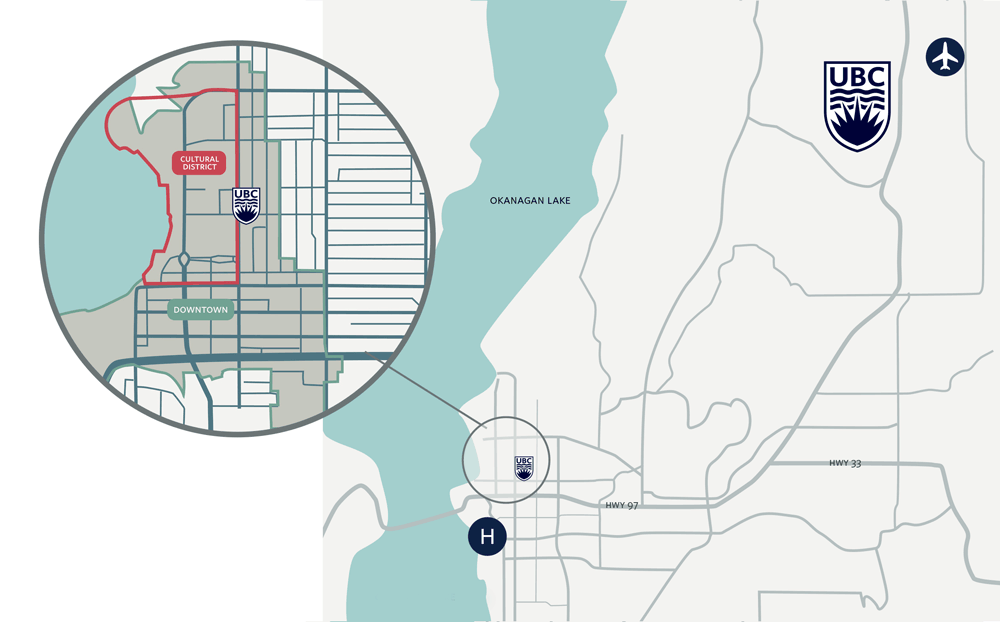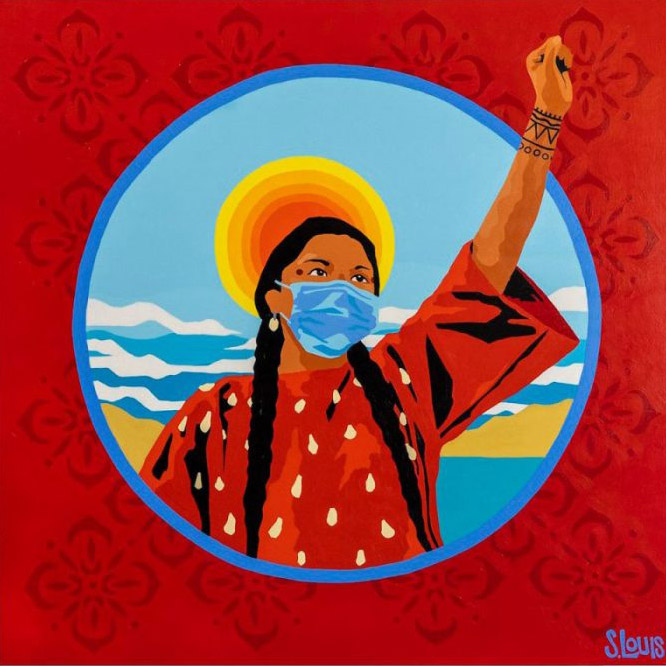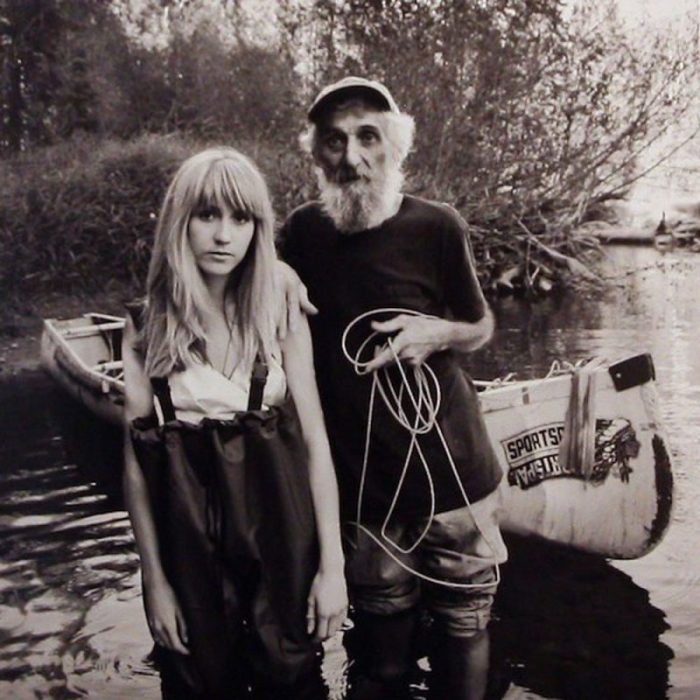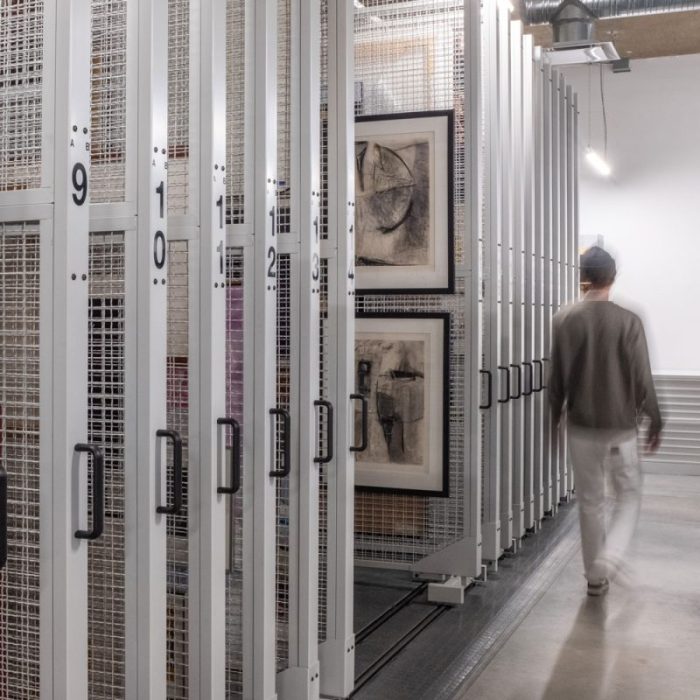
THERE’S A BUZZ IN THE STREETS OF DOWNTOWN KELOWNA—a new neighbour is moving in. After living on the outskirts of the city for more than 16 years, UBC Okanagan is planning to open its doors in a new location immersed in the heart of the city.
“We’re coming to the centre of the community that created us,” says Dr. Lesley Cormack, UBCO’s Principal and Deputy Vice-Chancellor.
With nine faculties and schools, close to 12,000 students and 700 faculty members, UBC Okanagan has established itself as an innovative hub for research and learning dedicated to serving its community. Given the rapid growth of the campus since 2005—which has now surpassed projected enrolment targets—the time is right to expand.
“With UBC Okanagan’s ongoing commitment to community-engaged research, it makes sense to open a collaborative, multi-use space in the heart of downtown Kelowna,” says Dr. Phil Barker, Vice-Principal, Research and Innovation. “The goal is to create opportunities for knowledge exchange, social innovation and creative expression and this new facility will help us explore that in interesting new ways.”

UBC’s Okanagan campus juxtaposed against the downtown presence.
Community-based learning
For UBC Okanagan students and faculty, having a presence downtown means those engaged in community-based academic work will be located in close proximity to partners, facilitating collaborations.
To accommodate these interactions, the university will occupy 100,000 square feet in a new building at St. Paul Street and Doyle Avenue. In addition to teaching and research, the building will offer leased office space and university rental housing, as well as a range of amenities.
UBCO’s School of Nursing will have a presence downtown, as will the School of Social Work. The site will house an art gallery, hosted by the Faculty of Creative and Critical Studies, that will support creative innovation and community engagement programming.
In addition, the Social and Economic Change Laboratory will host a Public Engagement Suite, which will facilitate community discussions about shaping and impacting regional socio-economic development.
“Having our nurses learn alongside social work and our health and social service partners will make the delivery of health care truly integrative,” says Dr. Marie Tarrant, Acting Dean of the Faculty of Health and Social Development.
The Schools of Nursing and Social Work already work with Interior Health, the BC Ministry of Children and Family Development and the First Nations Health Authority—and this new location will enhance these ties. It will also bring students closer to Kelowna General Hospital; Dr. Tarrant shares that co-locating an academic health facility near hospitals is the norm for many institutions.
She notes: “Being closer to partners like Interior Health and the Ki-Low-Na Friendship Society will deepen our relationships and increase the collaboration and integration of our academic health science activities in both research and teaching.”
Edward Taylor, an Associate Professor from the School of Social Work, adds: “The new building and downtown location will provide new student clinical field placements, and will increase the School of Social Work’s engagement with Interior Health, the Ministry and many non-profit agencies.”
Students are priority number one
“The downtown site will be an incredible opportunity for students to become engaged with the local community,” says Dale Mullings, Associate Vice-President, Students. “This will be a robust experience for them.”
Working with student groups, including the Students’ Union UBC Okanagan, Mullings has already identified priorities for downtown student life including transit, study space, security, housing and access to food.
The first stop for students will be an integrated service desk, where they will have access to a suite of supports including wellness support services such as mental and physical health counselling, along with academic and career advice.
“The key piece for us is knowing there will be a consistent presence for services,” says Mullings, who has previous experience interfacing with university downtown campuses. “The Kelowna community is supportive and positive about welcoming students into this environment.”
He says that services such as recreation, student clubs and faith-based offerings will also be made available. “By being closer to our community partners we’re creating an incredible public-academic fellowship.”
An art gallery at UBCO
UBC Okanagan has an art collection of approximately 800 pieces; Dr. Bryce Traister, Dean of the Faculty of Creative and Critical Studies, wants to share this art with the public and is eagerly anticipating gallery space at the downtown site. For him, a university without an art gallery isn’t a full-fledged university.
“The new gallery will be a place where students and other practicing artists can express themselves and engage with multiple public communities—completely aligning with the faculty’s learning mission,” says Dr. Traister.
The gallery aims to host small or partial traveling exhibitions, showcase newer artists and promote and curate Indigenous art.
Dr. Traister adds that the space will be customized to interact and engage with the community. “At times this will feel like a traditional art gallery and at others it will challenge our understanding of art with new creative approaches.”
Aligning with the new physical building is the soon-to-be-launched Master of Design degree, which UBCO plans to host at the Doyle location. The program, which is geared toward working professionals, blends critical design thinking, creative practice and engineering principles.
“The central goal of this program is to support designers in their quest to address meaningful and practical problems—to build for a better world,” adds Dr. Traister.

cax̌alqs (red dress) by Sheldon Louis (Okanagan/Syilx Nation).

Out There 6 (detail), 2013 by Sarah Franklin.

Seasoned: Winter (detail), 2015 by Julie Oakes.

UBCO’s Public Art Collection.
A public engagement suite
“Public engagement is crucial to maintaining the university’s focus on regionally responsive research and learning,” says Dr. Roger Sugden, Dean of the Faculty of Management.
Dr. Sugden is anticipating that the new Public Engagement Suite at the downtown site—which is linked to UBC Okanagan’s Social and Economic Change Laboratory—will be a place where individuals and groups collaborate with each other, and UBC students, faculty and staff think about the region’s social and economic fabric and future.
Discussions are underway about how the suite might integrate novel technologies such as a Sensory Lab, which is designed to control sound, light and smell, with the aim of creating a state-of-the-art learning environment. Plans for the experiential lab include wine education programming with UBC’s international partner, Université de Bordeaux.
“Successfully addressing local, regional and global challenges requires removing boundaries to access, engagement and learning,” explains Dr. Sugden of the suite’s careful space design that promotes the exchange of knowledge, ideas and perspectives.
“By facilitating reflection, debate and connection, the Public Engagement Suite will offer opportunities to learn from each other while exploring shared goals and our collective future.”
Dr. Barker adds: “I’m excited about a future where we have over a thousand students, faculty and staff working alongside our community partners in the heart of Kelowna. This will bring a vibrancy to our downtown core that will strengthen the community and region.”



